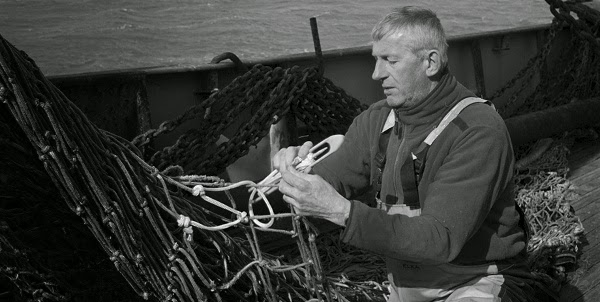Dir. Jean Francois Caissy
Set in and around a high school in a rural Québécois town, Jean François Caissy’s Guidelines alternates between student-counselor conferences and sequences of students letting off steam to build an illuminating study of adolescence. Instead of emphasizing the social or institutional factors affecting teen behavior, Caissy explores the universal, innate need to act out.
Caissy shoots the student-counselor sessions with a fixed camera locked onto the student. These sessions reveal little about the students’ lives or the actions that lead to the intervention. By denying us a backstory or specifics to connect us to the lives of the individual characters, Caissy trains us to focus on subtle gestures and mannerisms — a slight smile, a shoulder shrug, a downward glance, a set of fidgety hands — that suggest both defiance and embarrassment. As these expressions build into a collective whole, a nuanced, contradictory portrait emerges. The students enduring these interrogations appear both innocent and deviant, as they can recognize that their behavior is wrong but ultimately lack the ability to curtail it.
These sessions are intercut with long-take sequences of the extreme acts the students engage in to blow off steam. Caissy films these stunts in extreme long shot, defying the expectations of a world that invented GoPro cameras and Mountain Dew: the speed of a snowmobile charging down a forest lane, the bumping and jostling of an ATV rumbling up a dirt hill or the adrenaline rush from off-roading an SUV doesn’t register. Onlookers sell the ho-hum nature of these activities as well, mustering only mild amusement at their friends’ exploits. This approach makes these amateur daredevil acts seem ordinary and irrational, but also natural and unavoidable.
With its fixed camera shots, the lack of biographical detail of the subjects and the seeming randomness of the assemblage of scenes, Guidelines recalls Stephanie Spray and Pacho Velez’s Manakamana. That film, comprised of nine 11-minute-long takes in a cable car which takes visitors up to or back from the Manakamana Temple in Nepal, encouraged viewers to absorb the smallest details, let their minds wander and consider each rider as representative of a larger group or idea. What emerges from this simple structure is a broad anthropological study encompassing technology, spirituality, global development, tourism and intergenerational differences. While more narrow in its thematic focus and less rigorous in its formal design, Guidelines also invites a deep dive into its adolescent subjects, despite the lack of detail the film provides about their lives.

